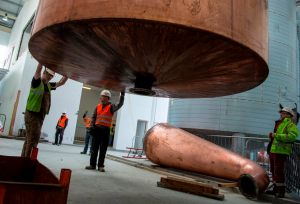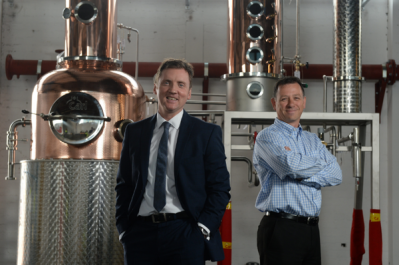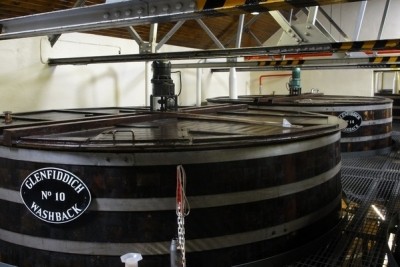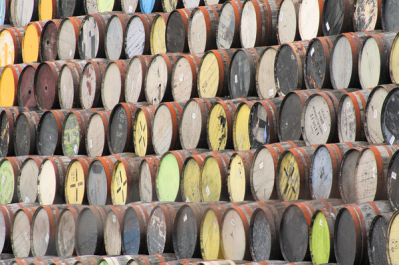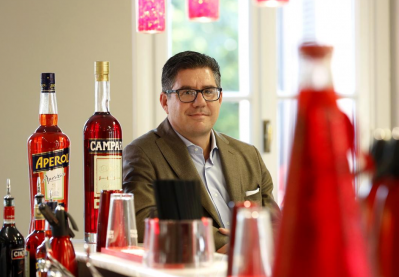CASE SALES VERSUS SCOTCH UNDERLINE POTENTIAL: JOHN QUINN, GLOBAL BRAND AMBASSADOR
'Sexy' Irish whiskey can shake Scotch monolith: Tullamore D.E.W
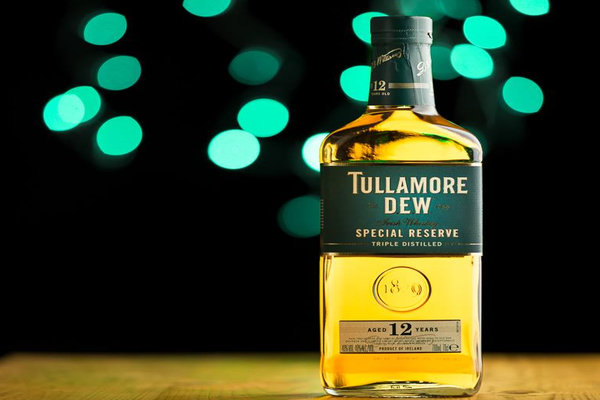
John Quinn, global brand ambassador for Tullamore D.E.W (owned by William Grant & Sons) spoke to BeverageDaily.com as the company celebrated the arrival of four copper stills (see photograph below) ahead of this year’s opening of the brand’s new 1.5m case capacity distillery in the town of Tullamore.
Tullamore D.E.W currently sources its whiskey from Irish contract distiller Midleton, and will do so until its distillery at Tullamore comes online this year, with production returning home for the first time since 1954, when the old distillery in the town was closed.
(The brand will also continue to source grain whiskey – 60%+ of any Irish whiskey or Scotch – from Midleton, although Quinn revealed it has a long-term plan to build a grain whiskey facility at Tullamore, to complement the malt and pot still facilities under construction.)
Irish whiskey sales are booming
The words ‘booming’ and ‘Irish whiskey’ are starting to slot together as easily as ‘health and wellness’ and ‘ham and eggs’, and within the category Tullamore D.E.W’s own statistics are certainly impressive.
Quinn says that previous owner C&C International grew Tullamore D.E.W’s volumes from circa. 100,000 cases when it took over the brand from Pernod Ricard in 1994 to around 600,000 by 2010, when it sold the business on to William Grant & Sons.
This catapulted Tullamore D.E.W from the No.5 position to the No.2 slot in Irish whiskey behind Jameson, a ranking it still occupies with 850,000 case sales and strong positions in the US, Germany, Sweden and Central and Eastern Europe.
The macro picture for Irish whiskey is similarly bright – Irish whiskey grew 10.5% last year in volume while value grew 16%. And there seems to be headspace in the market, given that Irish whiskey unit case sales totalled 6m in 2013, versus 86m for Scotch.
These figures that underline the ‘sexiness’ of the category,and Quinn says: “Irish whiskey has so much more potential – because many people still refer to whiskey as Scotch.
“Irish whiskey is sexy right now, and being sexy is both attractive and helpful. Off a very small base, if we’re growing at 10% per annum we’re growing at 600,000 cases a year, which is fantastic,” he adds.
Whiskey: A SMCG business...
That said, Quinn warns Irish distillers generally against getting carried away.
“I sometimes refer to the whiskey business as the slow-moving consumer goods business. To win over consumers, get them to be your brand loyalists and fans…you have to spend a lot of money,” he says.
Quinn agrees that ageing the liquid is a challenge for whiskey companies, and says he is pleased from a category perspective that potential future rivals are building distilleries, but warns that building brands is an altogether tougher proposition.
“The task is ‘how do you get the whiskey to be bought, consumed, paid for and demanded in the future?” he says.
“I don’t worry about rivals building distilleries. I worry about how they’re going to build brands. They can’t sell whiskey for three to five years, so they need patient bankers or investors. Then there has to be a market for it,” Quinn warns.
Facing-off against the Scotch monolith
He explains that emerging brands need to find the right distributors to get them access to grocery stores, bars, restaurants and hotels.
“But they have to build a brand as well – even getting it behind bars is a great achievement,” he says.
Then you hope someone comes in off the street and says ‘that’s what I want!’ But there’s an awful lot of choice – in whisky you’re up against the monolith of Scotch whisky, Jameson or even Tullamore Dew is some places,” Quinn adds.
“You have to battle against the brands that already have a consumer franchise – so it’s not easy. And I know, I’ve been in this business since 1974. You need long pockets and patient shareholders.”
Quinn says that Tullamore D.E.W welcomes its rivalry with market leader Jameson, even acknowledging that its peer “has done wonders for the category in some places, as we have in others”.
“Take Central Europe – we’ve been the trailblazers in places like the Czech Republic and Bulgaria – Jameson has done the same elsewhere, particularly in Western Europe and the States,” he says.
“And the States is the big prize, there’s no doubting that,” Quinn adds.
The States is the 'big prize'
He explains that Tullamore Dew is targeting US whiskey drinkers with the brand’s provenance and integrity as an Irish product, and highlighting the fact that it’s a whiskey that isn’t Scotch.
Although he demures regarding his US market expertise, Quinn reveals that Tullamore D.E.W is recruiting from non-traditional whiskey drinkers more than from Scotch drinkers.
Discussing Irish whiskey generally, he says US growth states include Philadelphia, New York, Chicago, Francisco and Minnesota, and insists that Tullamore D.E.W could easily expand its capacity to cater for future demand.
“Irish whiskey has 22% growth in the States right now,” he says. “So the category’s growing, and we’re growing at the pace of category.”
Accessibility is one watchword that gives Irish whiskey a lift, Quinn claims, where triple distillation strips out the heavier compounds commonly found in double-distilled Scotch, leaving a fresher, fruitier whiskey.
